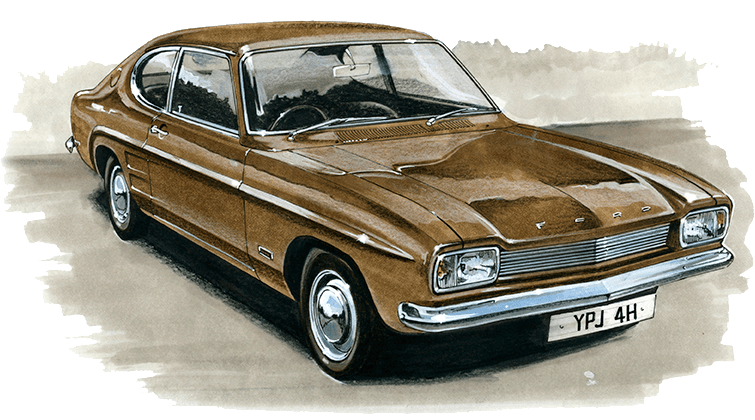
The Ford Capri is an iconic car that holds a special place in the hearts of automotive enthusiasts around the world. Launched in 1969 as the European version of the Ford Mustang, the Capri became a symbol of style, affordability, and performance. Over its production years, the Capri went through several significant evolutions, constantly adapting to the changing market demands and technological advancements.
The first generation of the Ford Capri, known as the MKI, was produced from 1969 to 1974. It was designed as a fastback coupe with a long bonnet and a short rear end, giving it a sleek and sporty appearance. The MKI featured a range of engine options, from the four-cylinder 1.3-liter engine to the powerful 3.0-liter V6. Performance enthusiasts were particularly drawn to the range-topping Capri RS2600, which boasted a top speed of 125 mph and came equipped with performance-enhancing features like twin carburetors and a limited-slip differential.
In 1974, the Ford Capri entered its second generation, the MKII. This generation marked a shift towards a more practical and refined design, with improved aerodynamics and enhanced safety features. The MKII offered a wider range of engine choices, including the introduction of the Cologne V6 engine, which gained popularity for its smooth power delivery and reliability. Ford also introduced an upscale variant called the Capri Ghia, which came with luxurious features like leather upholstery and burr walnut dashboard trim. Additionally, the MKII saw the introduction of several limited edition models, such as the Capri 2.8 Injection Special and the Capri 280 Brooklands.
In 1984, Ford launched the third and final generation of the Capri, the MKIII. This generation represented a significant departure from its predecessors, with a more rounded and modern design aimed at appealing to a wider audience. The MKIII featured improved handling and ride quality, thanks to the introduction of a new independent rear suspension system. Ford also refined the range of engine options, offering fuel-injected engines with increased power and improved fuel efficiency. However, despite these improvements, changing market preferences and increased competition from other manufacturers led to a decline in sales, and production of the Capri was eventually discontinued in 1986.
Although the Ford Capri had its final production year more than three decades ago, its legacy still lives on. Its unique blend of style, performance, and affordability has left an indelible mark on the automotive industry. Today, the Capri is recognized as a classic car, cherished by collectors and enthusiasts alike.
In conclusion, the Ford Capri evolved significantly over its production years, adapting to changing market demands, incorporating technological advancements, and refining its design. From the sporty MKI to the refined MKII and the modernized MKIII, the Capri cemented its place in automotive history as a quintessential coupe that captured the essence of the 1970s and 1980s. Its timeless design, exhilarating performance, and affordable price tag continue to captivate car enthusiasts and ensure its status as an iconic part of motoring heritage.